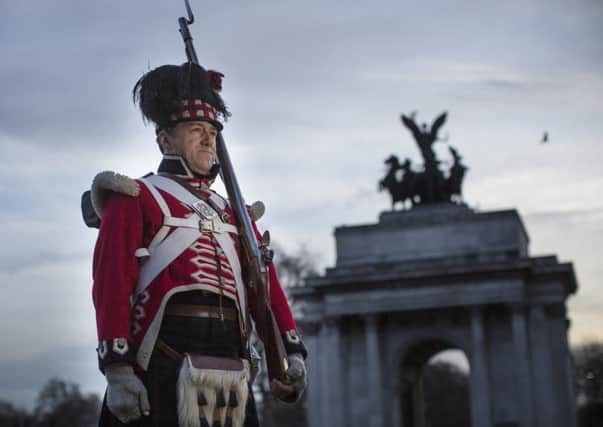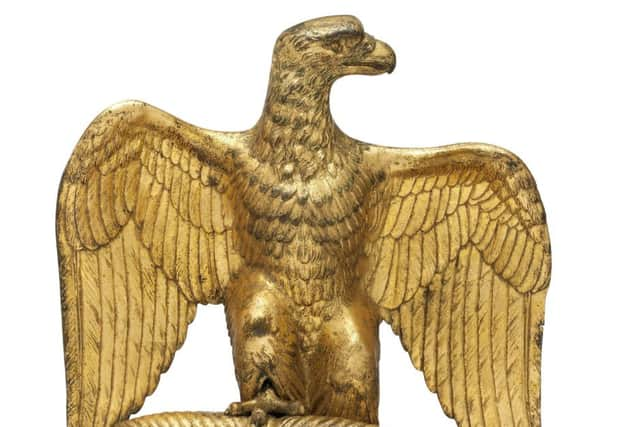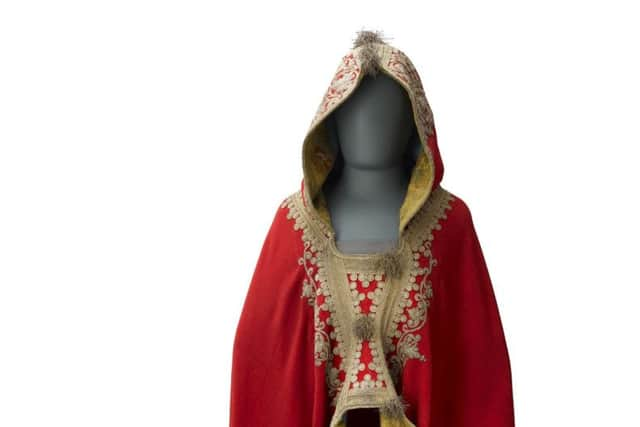Captured French eagle set for Waterloo exhibition


The piece of war memorabilia features in an online gallery of items assembled for the launch of a website to commemorate the bicentenary of the battle in June 1815.
Other items include the Duke of Wellington’s boots, Napoleon’s cloak and a field surgeon’s blood-stained equipment, as well as a number of objects never before put on public view.
Advertisement
Hide AdThe haul has been drawn from the National Army Museum’s Waterloo Collection, loans from museums across Europe and private collections.


A hundred items including the eagle standard captured by Ewart are visible online from today and a further 100 will be added in the lead- up to the official anniversary on 18 June.
FOLLOW US


SCOTSMAN TABLET AND MOBILE APPS
Ensign Ewart (1769-1846), from Kilmarnock, is remembered for capturing the eagle standard of the French 45th Regiment of the Line during the battle.
He was a sergeant in the Royal North British Dragoons, a cavalry regiment better known as the Scots Greys, who at the start of the battle formed part of a heavy cavalry brigade held in reserve by Wellington. They entered the fray by passing through the 92nd Regiment of Foot, the Gordon Highlanders, and surprising the French 45th Regiment of the Line.
As the Scots Greys advanced, Ewart cut down the four escorts accompanying the standard- bearer and bore the eagle away. He was ordered to take the eagle to safety and took it to Brussels while the battle continued. His capture of the standard rapidly entered folklore and he became a celebrity after being invited by Sir Walter Scott to address a Waterloo dinner in Leith in 1816.
Only two French eagles were captured during Waterloo – those of the 45th and 105th regiments, and both go on show in the collection.When he died in 1846, Ewart was buried in the graveyard of a church near Manchester. The area was subsequently redeveloped and the graveyard paved over.
Advertisement
Hide AdEwart’s body was exhumed in 1938 and he was reburied beneath a large granite memorial on Edinburgh Castle Esplanade.
Janice Murray, director general of the National Army Museum, said: “The museum is really excited to see some of its most unique and fascinating objects featured in the online gallery alongside such a broad range of other collections.
Advertisement
Hide Ad“Each item featured tells an interesting story, transporting viewers back to 1815 and giving them a real feel for the moments before, during and after the battle.”
The duke’s boots were designed by Wellington himself to be suitable for both battleground and evening wear.
Although historians are sure the boots included in the gallery belonged to Wellington, it is not known if he wore them at Waterloo.
There is more certainty about a cloak belonging to Napoleon. The French emperor wore the garment the night before the battle and its Arabic designs are thought to reflect his fascination with the Middle East.